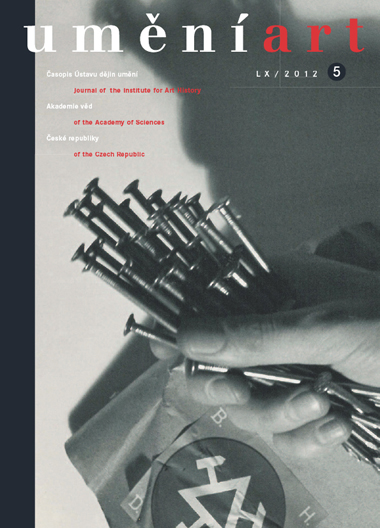Jiří Padrta (ed. Martina Hrabová)
Poezie lepených papírů
Jiří Padrta's text was probably written in 1964 and it was evidently originally intended as a long journal article accompanied by an illustrated supplement with, mainly, examples of contemporary Czech collage. Padrta reflected on the use of collage, assemblage, and montage in contemporary Czech art, contrasting it with trends in international art and with an excursion through 20th-century history, in which collage played a pivotal role in the transformation of the work of art. Padrta devotes the first part of the text to the aesthetics of collage and describes the basic attributes of this technique, most notably the rediscovered interest in reality, in real things. Collage, assemblage, and montage incorporate everyday materials not usually used in art into the work of art, and shift the boundary between high and low and other categories of art, such as painting, sculpture and poetry. The second chapter takes a cross-sectional look at the history of collage in world art. Padrta uses individual examples to explain the basic principles of collage in reference to French cubists, Italian futurists, Schwitters, Duchamp, scandalous dada and the surrealists, and to its use in contemporary post-war art, where collage, assemblage, and montage have figured widely as art techniques, from Dubuffet, Burri, and abstract expressionism, to new realism, pop-art and junk-art. Jiří Padrta interprets collage in post-war art as an analogy to contemporary urban civil life, which is itself a collage of an infinite number of visual impressions. In the final part of the study, he explores the use of collage in Czech art, where it long remained outside the focus of interest and only came to be more systematically applied with the advent of Surrealism. He highlights in particular the cubist work of Emil Filla, the poetist works of Karel Teige, the surrealist work of Jindřich Štyrský and Toyen, and the work of Zdeněk Rykr and Adolf Hoffmeistr. Padtra introduces Czech post-war collage art in the examples of four very different artists: Jiří Kolář, post-war Hoffmeister, Jan Kotík and Karel Malich.
Full-text in the Digital Library of the Czech Academy of Sciences:
https://kramerius.lib.cas.cz/uuid/uuid:9f06b70b-21f7-3bcc-1852-d271c336fdab
< back

